Long distances (and big numbers) can be difficult grasp. Designers Jesse Williams and David Paliwoda took a stab at it and made it easier to understand the distance from Mars. Simple and totally fun. I’m not sure how accurate the travel time and distance are, but I’m guessing it takes differing orbits into account.
-
There’s a strand of the data viz world that argues that everything could be a bar chart. That’s possibly true but also possibly a world without joy.
—Amanda Cox, 2013
There’s a great interview with Amanda Cox from The New York Times on visualization, some of the skills required, and where the field is headed. I like this tidbit on design, which is a contrast to the above:
Design and typography do matter. It’s about hierarchy of information and how people perceive information. Done properly, that clean up work really matters. On the other hand, it’s easy to believe that it matters more than it does. If you make a fantastically interesting chart and some poor design decisions, the data will still come through. If you make a bad chart with a beautiful design, what have you done, really?
Read the whole thing. Thank me later.
-
Melting snowpacks feed into streams and rivers and serve as a source of water for nearby communities. The Snow Water Equivalent Cabinet by artist Adrien Segal represents the amount of water in snowpack in Ebbetts Pass, California.
Each drawer is one year of data for a total of 31 years – 1980 – 2010. The size of the drawer is directly related to the amount of water stored in the snowpack for the given year. Some of the drawers are so shallow that they are barely functional. Wet years have larger drawers.
I understand the metaphor behind the limited functionality at low water points, but a totally functional version would be a sexy piece in a studio. Snow Water is currently on display at the Richmond Art Center as part of the Innovations in Contemporary Crafts exhibition until June 1. [Thanks, Michael]
-
Whoa, that was fast. Data Points is now available. Thanks to all of you for making this possible.
-
This appeared at my door today. It’s awesome.
I suspect those who pre-ordered Data Points (thanks!) should receive their copies soon.
Read More -
Employee theft accounts for billions of dollars of lost merchandise per year, so it’s a huge concern for retailers, but it often goes unreported as a crime. If only there were reference databases where business owners could report offenders and look up potential employees to see if they have ever stole anything. It turns out there are, but the systems have proved to be problematic.
“We’re not talking about a criminal record, which either is there or is not there — it’s an admission statement which is being provided by an employer,” said Irv Ackelsberg, a lawyer at Langer, Grogan & Diver who represents Ms. Goode.
Such statements may contain no outright admission of guilt, like one submitted after Kyra Moore, then a CVS employee, was accused of stealing: “picked up socks left them at the checkout and never came back to buy them,” it read. When Ms. Moore later applied for a job at Rite Aid, she was deemed “noncompetitive.” She is suing Esteem.
On paper, the data sounds great for business owners, and keeping such data also seems like a fine business to run. Thefts go down and owners can focus on other aspects of their business. The challenge and complexity comes when we remember that people are involved.
-
According to the Bureau of Labor Statistics, cab drivers and chauffeurs make a median salary of $22,400 per year, or $10.79 an hour. (I believe that’s not including tips.) Using about three months of fare data from a single driver, Alvin Chang for The Boston Globe showed how a driver makes a living day-to-day.
Time runs left to right, and each column represents fares collected in a day. A driver starts each day in the red when he or she leases a cab for $125, which includes gas, and then works into the blue.
After an animation plays out over a few seconds, you can click to zoom in and see specific fares. I expected to drag left and right once zoom, but the chart just zooms back out. I suspect the interaction is mostly there for people on mobile devices. I also wanted to scrub the vertical line that indicates time to see details for spikes or days no fares were collected.
So there’s still a bit to be desired here, but the data itself is interesting, which makes it worth a look.
-
-
-
Visualization online can be a challenge if you don’t know how to program. Analytics startup Trifacta just lightened the load with Vega, a “visualization grammar” that lets you create and share by editing a JSON file. Check out the demo live editor to see how this works. Select different chart types from the drop down menu on the top left, which you can render in HTML5 Canvas or SVG.
Of note: Vega is built on top of Data-Driven Documents.
To get right to the point: Vega is NOT intended as a “replacement” for D3. D3 is intentionally a low-level system. During the early design of D3, we even referred to it as a “visualization kernel” rather than a “toolkit” or “framework”. In addition to custom design, D3 is intended as a supporting layer for higher-level visualization tools. Vega is one such tool, and leverages D3 heavily within its implementation.
Gonna keep an eye on this one.
-
For the past few months, Stamen Design has been working with 3-D data from Nokia’s Here. Something pretty came out of the experiment.
For your viewing, embedding, linking, and otherwise internet-ing pleasure: http://here.stamen.com/ is live today. It uses 3D data from HERE for San Francisco, New York, London, and Berlin to create city-wide 3D browsable maps, and it does this in the browser (though you’ll need a WebGL-enabled browser to see it). As in many of our other mapping projects, the urls change dynamically depending on location and other factors, and the data conforms, more or less, to the Tile Map Service specification. What this means, among other things, is that it’s not only possible to link to and embed these maps at specific locations and zoom levels, but that it’s easy—and as we’ve seen with Citytracking, easy is good.
There are a bunch of views to play with, and you should try all of them. My favorites though are the city-planning look in Pinstripe and the glowing aesthetic of the height view.
-
Tips on making it through, what I would tell my previous self going in, and advice on taking advantage of the unique opportunity that is graduate school.
-
-
-
FlowingData reader Amir sent this along. In lieu of a list of coffee drinks, this place in in East London opted for ingredient breakdowns. I’m guessing there’s a standard menu outside the frame, because otherwise, coffee neophytes (like me) would have no clue what to do. Anyone care to fill in the blanks?
Spot any charts in the wild? You should email me a picture.
-
The shooting at Sandy Hook Elementary School was horrible, but there have been thousands of gun deaths since. Huffington Post is mapping them.
Circles represent the number of deaths in a city, and the larger a circle the higher the count. A bar chart on the bottom shows the data over time and serves as a navigation device. Click on a day or a location, and the names of victims appear on the right with a link to the related news story.
See also: Periscopic’s work on the topic, which now has filters and is updated in real-time.
Also: episodes 487 and 488 of This American Life, which focus on Harper High School in Chicago, where gang violence is a daily concern.
-
Metrico is a puzzle action game for PlayStation Vita that centers around charts and graphs. The creators call them infographics, but whatever.
The idea has been in our heads for a few years, and was born out of noticing how beautiful infographics can look as an art form. It was reinforced by seeing that infographics have become increasingly important in contemporary pop-culture. While they haven’t made their way to videogames yet, we think it’s a place where they can work exceptionally well. This is not just because of their pretty aesthetics as much as it is about actively changing data and how that can be visualized.
The teaser above shows a guy running on and jumping over bar and line charts, and the last sentence of the paragraph seems to suggest that these things will be based on actual data. I kind of doubt it though.
How about a SimCity-like game that uses real-time crime, traffic, and government data? Now that’d be something. They already kind of do that for sports games with injuries and starting lineups. [Thanks, Raphael]
-
-
When you go to one of the major sites to look up the weather, it’s often hard to find what you’re looking for. The sites feel dated, there isn’t much hierarchy to the information, and navigation gets buried in the show-as-much-information-as-possible-on-the-same-page approach. Forecast, a site by the makers of the Dark Sky app, hopes to improve that experience during those times you need more than the high and lows for the day from the nearest widget.
When you visit Forecast, you notice a difference right away. There’s a map with local, regional, and global views, the temperature in large print on the right, and there are descriptions about what to expect that are easy to understand.
From there, you get your daily forecasts below the map with details on demand. So you can get a lot of the same information that you get from larger sites, but you don’t get hit with a bunch of data at once, and when you request more information, you get it quickly.
There’s also an API. Forecast and the Dark Sky app both run on it, which is the cherry on top of the goodness.
I usually go to Matthew Ericson’s minimalist weather page when I’m figuring out when to ride my bike or mow the lawn. Forecast might be my new weather destination for a while.
-

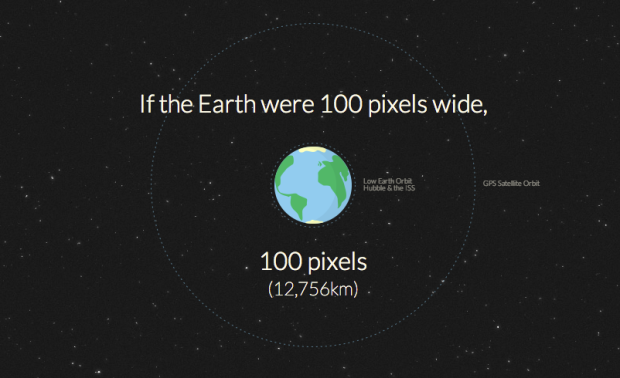

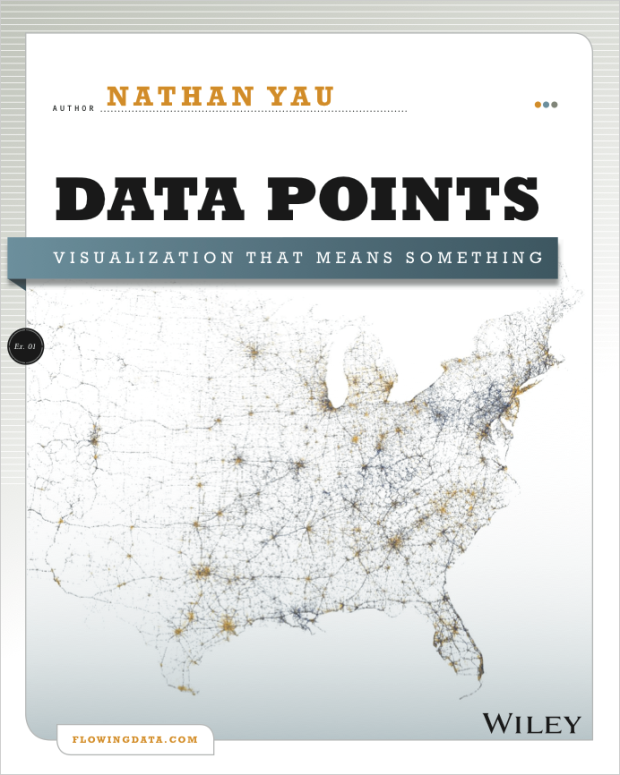
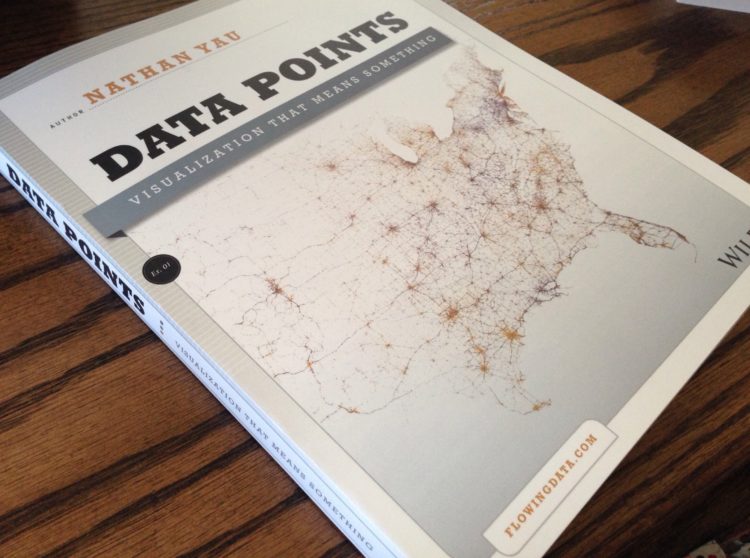
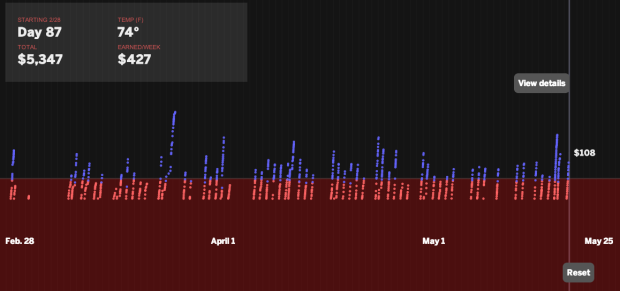
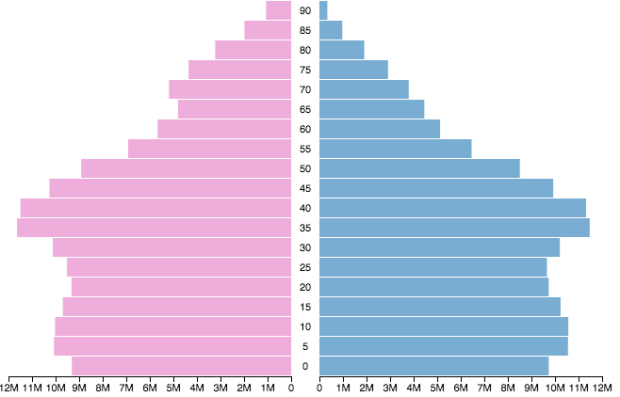





 Visualize This: The FlowingData Guide to Design, Visualization, and Statistics (2nd Edition)
Visualize This: The FlowingData Guide to Design, Visualization, and Statistics (2nd Edition)










